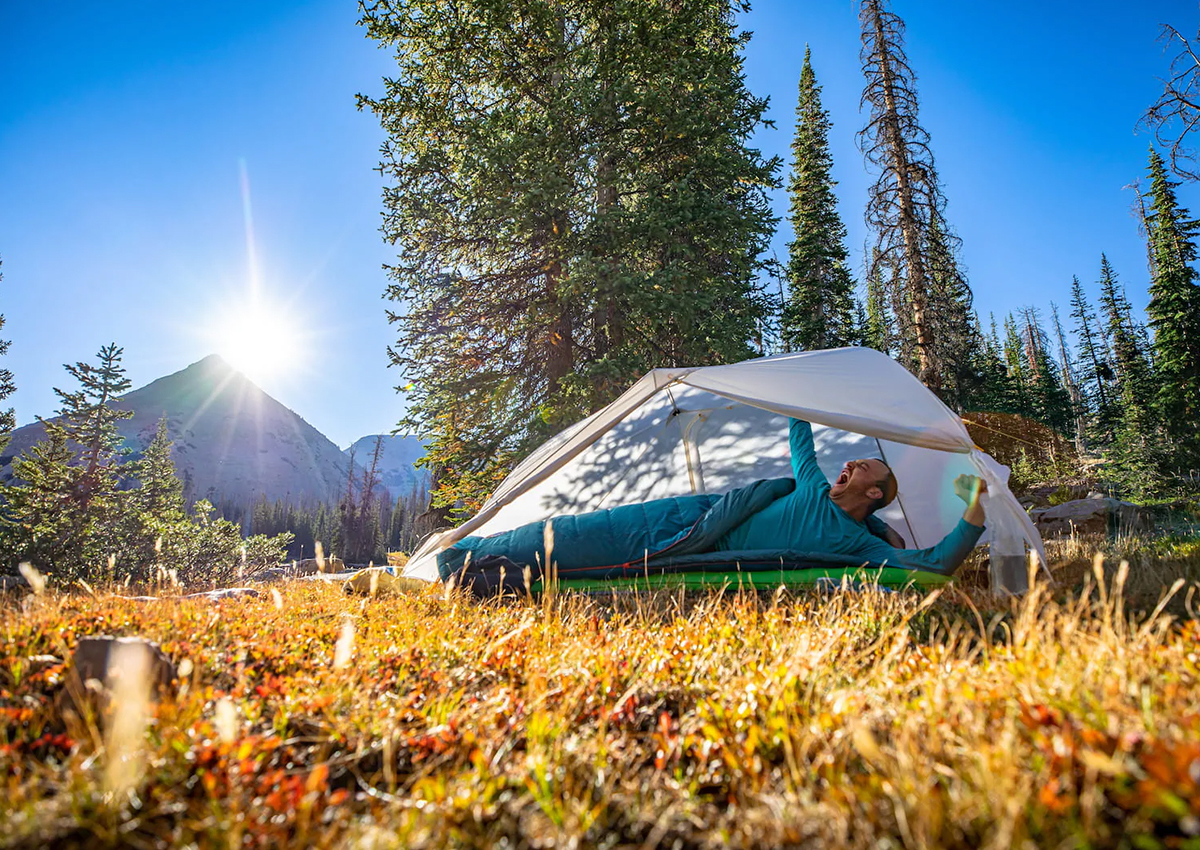We may earn revenue from the products available on this page and participate in affiliate programs. Learn More ›
Along with your tent and backpack, choosing the right sleeping bag is one of the most important—and expensive—decisions you will make when filling out your backcountry kit. To cut through all the options and find the bag that’s right for you, you’ll need a good understanding of what the most important differentiators are, how to weigh performance versus cost, and more. Here we’ll take a look at some of the biggest considerations to help you make the best choice for your purposes.
Shape
Retangular
This is the classic sleeping bag shape, what you probably remember from sleepovers as a kid. It had plenty of room for restless kids to toss and turn while they slept, and it’s got plenty of space for you to do the same. The downside is that if you are heading out into anything worse than prime summertime weather, you might get a bit chilly. The reason for this is simple: rectangular sleeping bags are just not that great at keeping heat in, mainly due to the potential for drafts at the top of the bag. In fact, rectangular bags are so bad at keeping heat in that most aren’t made to handle serious temps. But they are comparatively comfortable, as they allow individuals to toss and turn to their heart’s content—if you know that you’ll be out in warmer temps, then these can be a good option.
Mummy
So-called mummy bags get their name from their hood and close-fitting, restrictive shape: just wide enough at the shoulders to fit an average adult, tapering diagonally down to a narrow footbox that is just wide enough for your feet. You’re basically forced to sleep on your back in a mummy bag, possibly with your arms crossed over your chest. You get the picture. Plenty of people find these bags difficult or impossible to get comfortable in.
The reason these bags became so popular is that they are great at maximizing warmth for weight. There are a few reasons for this. The first is that because the bag is so restrictive, there is virtually no extra air in the bag that needs to be heated up. The design of the collar also does a great job at preventing drafts from sneaking inside, while the hood keeps heat from escaping out the top of your head. If you are a sound sleeper who naturally sleeps on your back, then this is an excellent choice for you. Everyone else, keep reading.
Semi-Rectangular
Think of these as the compromise between the mummy bag and the classic rectangular bag. Semi-rectangular sleeping bags taper some between the shoulders and the footbox, but not enough to prevent you from rolling over. They usually incorporate a hood, and can typically be cinched up around the neck to prevent a draft from creeping in. They also come at temperature ratings that are appropriate for both shoulder season and winter activities.
Quilts
Quilts are the comparative newcomer to the scene, and have been growing in popularity in recent years. The idea here is that by cutting out the bottom of your sleeping bag, you can save weight with a negligible loss of warmth (assuming you have secured an appropriate sleeping pad). Many side sleepers and stomach sleepers also find that the best backpacking quilts are significantly easier to get comfortable inside of than sleeping bags.
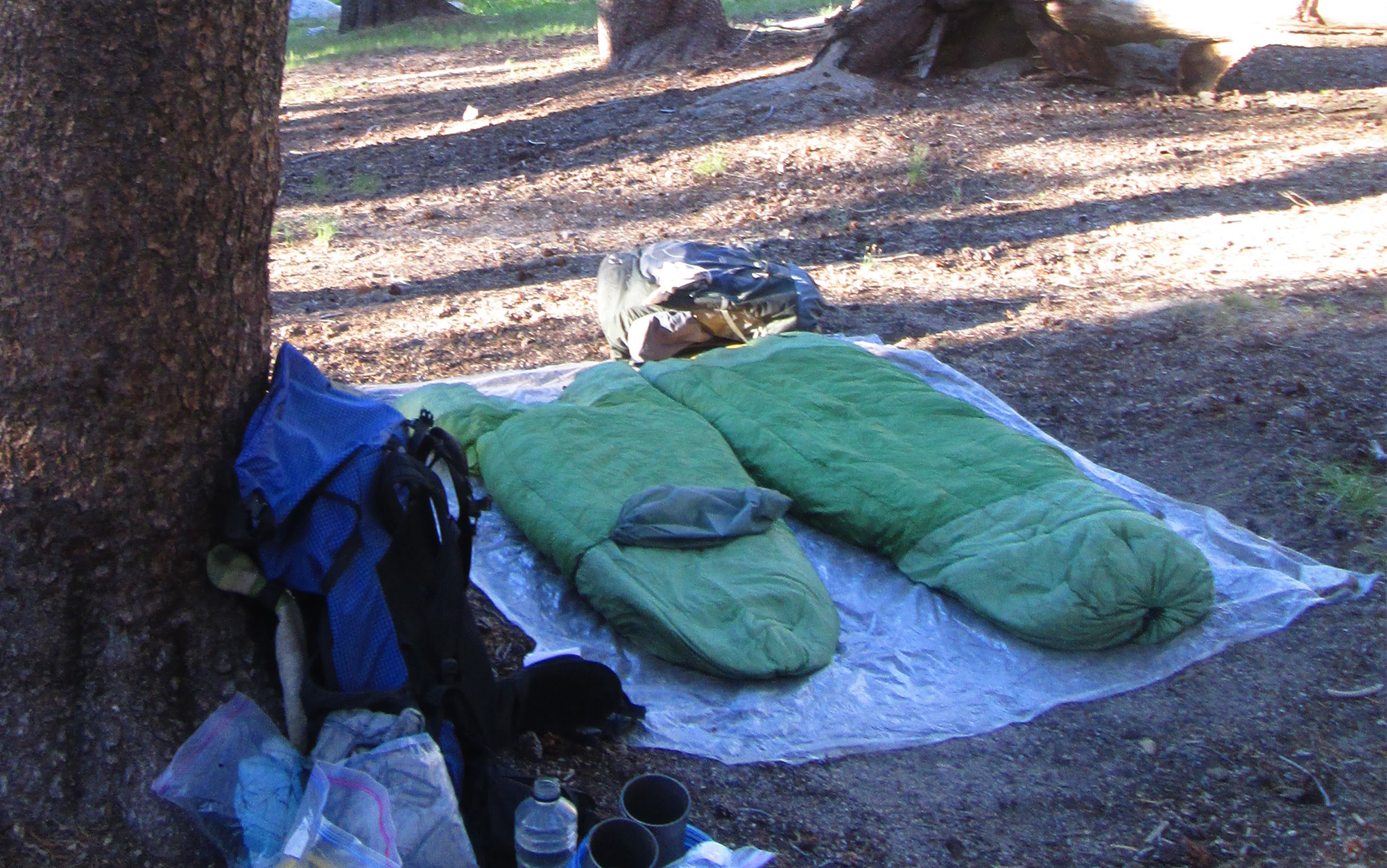
The downside of quilts is that they are more complicated to use, as you need to use care in how you attach the quilt to your sleeping pad to avoid drafts. Quilts are typically not a great choice for anyone just starting out with their backcountry kit.
Read Next: Best Sleeping Bags
Temperature Rating
The first thing you need to know about a sleeping bag’s temperature rating is that there isn’t going to be just one number: there is a “comfort” temperature, a “lower limit” or “transition” temperature, and a “risk” temperature. The comfort number is what it sounds like—this is the temperature at which you’re the most likely to actually be comfortable. The “lower limit” or “transition” temperature is when you will start to feel uncomfortable—you’re not shivering necessarily, but you’re not sleeping well either. The “risk” temperature is the temperature at which you are in danger of hypothermia.
The tricky part is that the advertised temperature rating for a sleeping bag is sometimes the comfort temperature and sometimes the transition or lower limit rating. Sleeping bag manufacturers and retailers are starting to do a better job of advertising this difference, but it can still be easy to skim over. Be sure to check what you’re looking at before making a decision.
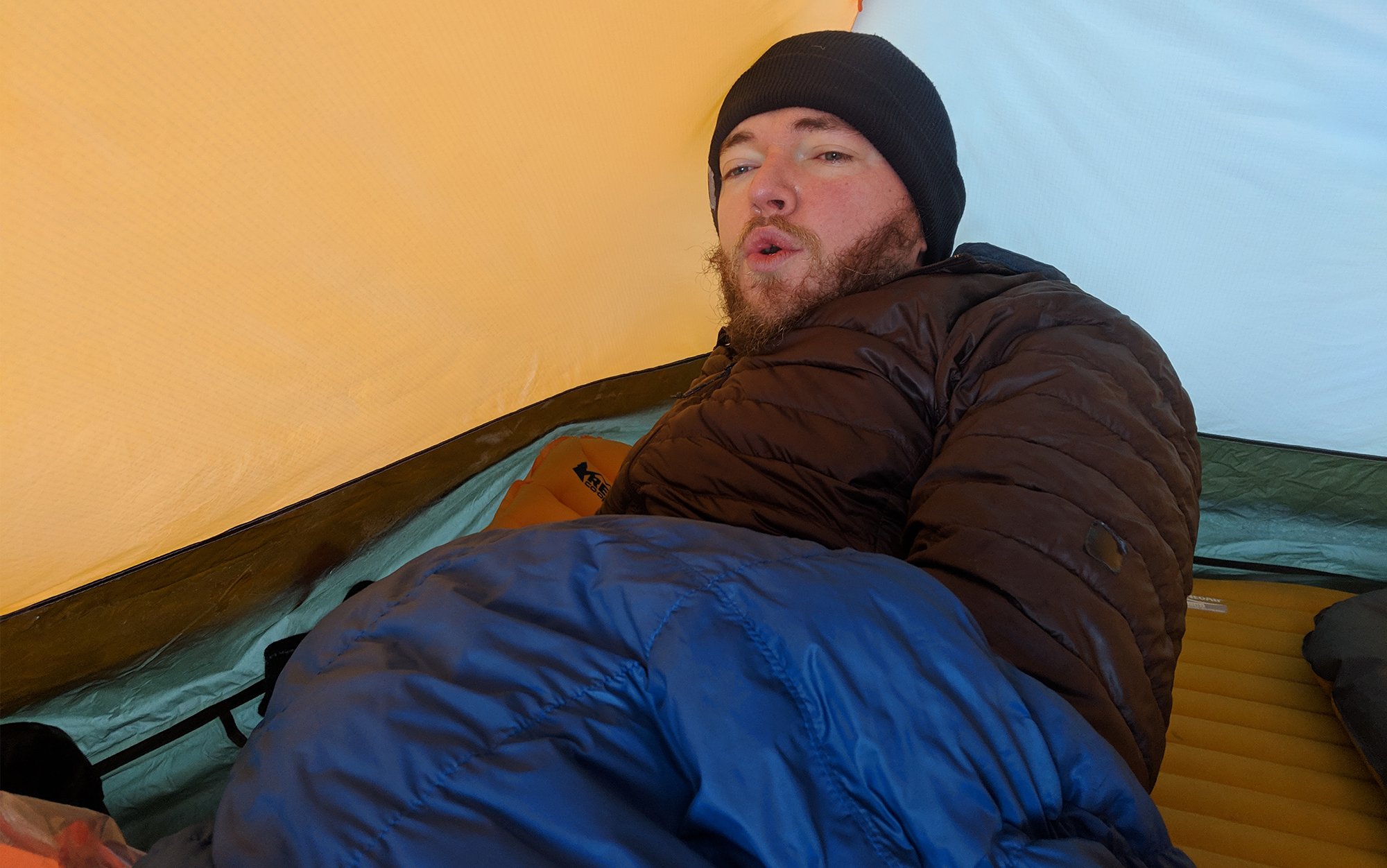
The good news about these temperature ratings is that they aren’t based on the personal options of the manufacturers—there is an actual standard that the temperature of a sleeping bag is judged on (two, in fact). Sleeping bag temperature ratings are assessed using a heat-producing manikin with temperature sensors placed inside of a climate controlled room on top of a 4.8-R rated sleeping bag—I’m vastly paraphrasing here, but you get the idea of what an intense process this is. The upshot of all this effort on the part of the sleeping bag manufacturers is that if you know your ISO-rated or EN-rated 30-degree bag is the right temperature for you, you can be reasonably confident in purchasing a 30-degree bag from a different manufacturer.
The downside is that the temperature ratings are just that: ratings. Human bodies are different, and only you know if you are cold, hot, or surface-of-the-sun hot. If you run cold, go with at least 10 degrees warmer than you think you need.
Gender
Most of the time, the difference between a men’s sleeping bag and a women’s sleeping bag is just about the size and shape (and, too often, the color), but sometimes there are differences in where and how the bag’s insulation is concentrated to reflect the differences in how men and women dispel heat. Women’s bags are also more likely to list the comfort temperature rating, as opposed to the transition rating (manufacturers generally assume that women run colder than men), but this varies by brand: always check the fine print before committing to a purchase.
Fill
One of the most important distinctions between sleeping bags is whether they use synthetic or down fill. Most budget sleeping bags get their warmth from synthetic (typically polyester) fill—think of the bag you used for sleepovers as a kid. Synthetic-fill sleeping bags tend to be heavier, lower cost, and better able to retain heat when wet. Most high-end bags, however, are filled with soft, fluffy feathers, found under the tough exterior feathers of ducks or geese. Down-filled sleeping bags are often more expensive, lighter, and warmer.
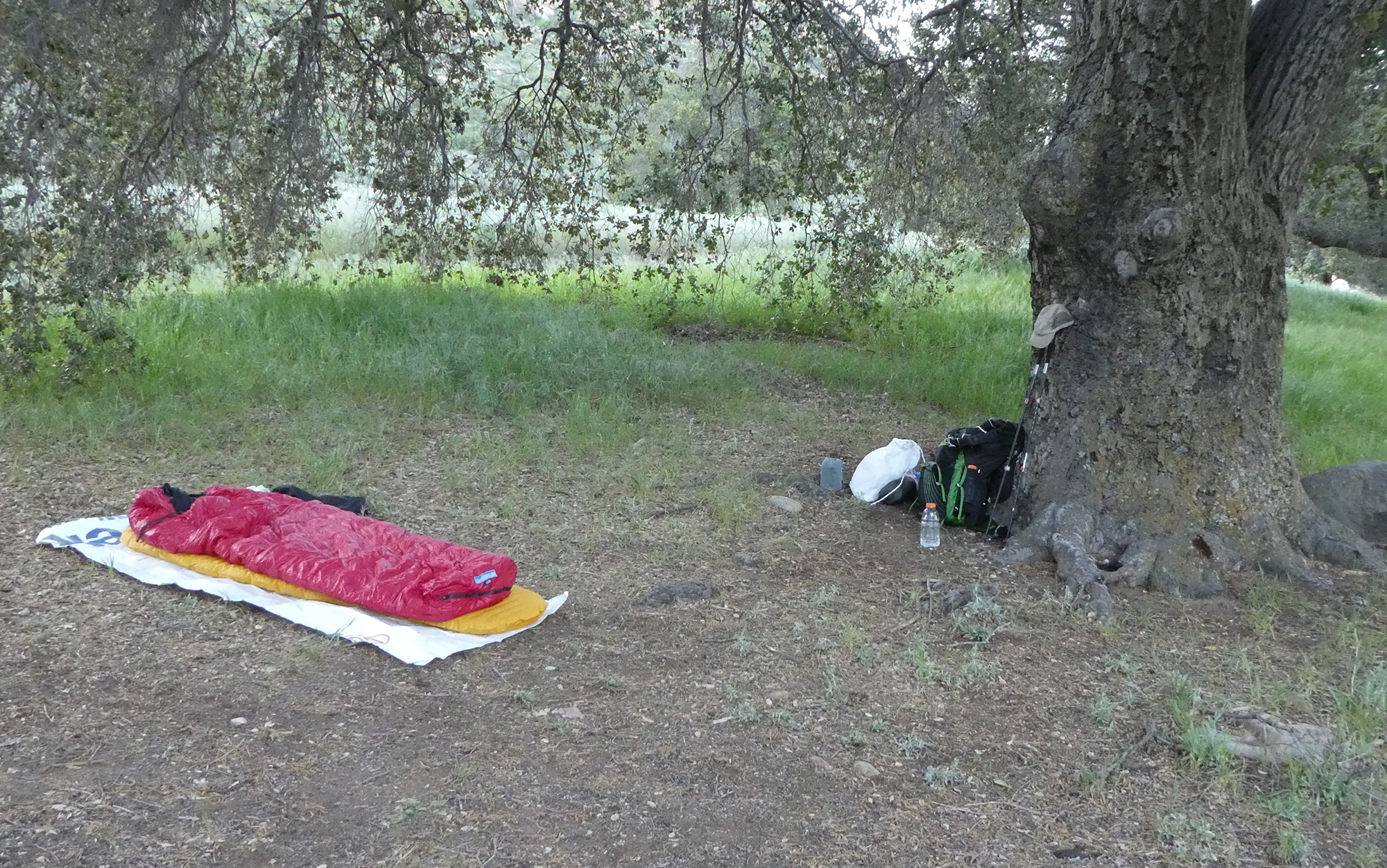
If you look at a down feather (they tend to poke their way through sleeping bag fabric every so often), you’ll see that it’s made up of innumerable wisps connected to a short shaft. The lack of structure to these feathers creates small air pockets, which trap heat from your body and insulate it from the cold outside air. Down-feather quality is measured by fill power (fp), or how much down it takes to fill one cubic inch of space. For instance, one ounce of 550fp down will fill about 9 liters, while one ounce of 900fp will fill almost 15 liters. In sleeping bags, using down with high fill power can result in significant weight savings. The Achilles heel of down feathers has always been moisture—when down gets wet, the pockets of air disappear, eliminating virtually all of its insulating properties. In recent years, sleeping-bag manufacturers have started using down feathers treated with a water-resistant coating, sometimes referred to as DownTek, but there are several different names. While a soaking wet sleeping bag using DownTek is still going to make for an uncomfortable evening in the backcountry, water-resistant down does reduce the heat loss caused by overnight condensation inside your tent. When purchasing a down sleeping bag, we recommend looking for a bag that is RDS (Responsible Down Standard) certified, which helps ensure that no geese or ducks were unnecessarily harmed (such as live plucking).
While the sleeping bags of slumber parties are a good example of synthetic fill, high-end synthetic fill mimics the qualities of down, using short filaments that create pockets to trap your body heat. Further, synthetic fill retains heat while wet without the need for additional treatment. The highest quality synthetic fills can approach the insulation-to-weight ratio of 650fp down, but these synthetics also approach the cost of the lower quality down. In some instances, sleeping bags will incorporate both down and synthetic fills to balance the pros and cons of both.
Shell and Lining Materials
Holding in all that cozy fill is the shell (outside of your bag) and lining (inside of your bag, closest to your body). These are typically made out of either nylon or polyester, which are both reasonably comfortable and reasonably durable. High-quality sleeping bags will also tell you the thickness of the material (rated in denier (D)), with thicker materials weighing more but offering more durability, and thinner materials needing some TLC, but contributing to an overall lighter weight. Generally, 30D is a fairly robust material while 10D or lower would be considered lightweight. Sometimes you’ll also see that the shell or lining is “ripstop,” which is a type of weave that prevents the material from ripping further if it gets a tear (useful, if you plan to repair your gear). Sometimes the lining is advertised as “taffeta,” which is basically a fancy way of saying the material is meant to be soft (results may vary). Sometimes the shell will also have a durable water repellent (DWR) coating, which can be useful if you expect to experience condensation inside your tent.
Additional Features
Hood
You lose a significant chunk of body heat out of your head, so having a hood on your sleeping bag (typically stuffed with the same fill as the rest of the bag) makes a lot of sense. Hoods are most common on mummy bags, although they also appear on many models of semi-rectangular bags.
Vents
The problem with that 15-degree bag is that every so often you’re trying to sleep in 60-degree temps—sometimes on the same trip in which you expect to encounter freezing temps. To help provide more versatility, some sleeping bags incorporate zip vents along the midsection of the bag, which you can open up to release heat.
Draft Collar
These are extra down-filled flaps located on the front side of the neck opening. On colder nights, you can tuck them inside the bag, to help prevent drafts from sneaking inside the sleeping bag.
Filling Out Your Sleep System
After you’ve chosen your sleeping bag, it’s time to think about your sleep system, which also includes a sleeping pad, and possibly a liner and/or pillow.
Sleeping Pad
In order for your sleeping bag to operate at its stated temperature range, you must pair it with an appropriate sleeping pad. The reason for this will make sense to anyone who has ever tried to sit down on the ground on a freezing winter’s day—if you thought the air around your body was cold, just wait until you experience the cold of the ground. A high-quality sleeping pad is a must for shoulder season and winter adventures.
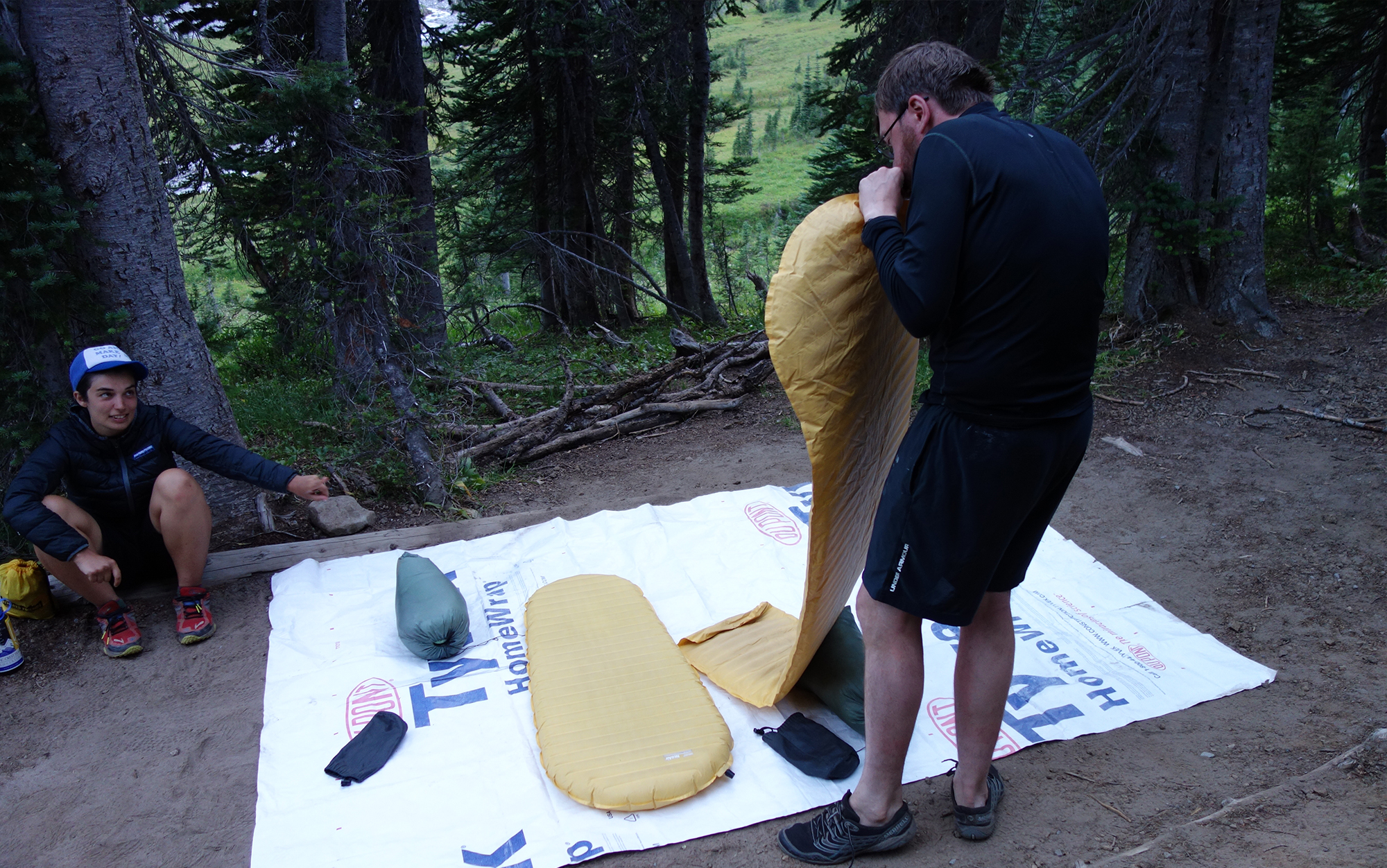
Annoyingly, unlike sleeping bags, sleeping pads are given ratings on an R-scale, which are a little bit harder to suss through. But generally, you’ll need between a 1 and a 2 for most summer adventuring below treeline, between a 3 and a 4 when you’re headed up into the alpine or starting to encroach on shoulder season, between 4 and 6 if you’re headed into shoulder season proper, and upwards of 6 for most winter activities.
Read Next: Best Backpacking Sleeping Pads
Sleeping Bag Liner
Sleeping bag liners have a dual purpose: keeping the oils and dirt and grime away from your sleeping bag (which, in addition to being gross, can impact the down or synthetic fill’s ability to do its job) and to add an extra boost of warmth. So, for instance, some people will use a 30-degree bag for most of their adventuring but then add a liner when they know that temperatures are going to dip down at night. Either way, using a liner is entirely optional.
Pillow
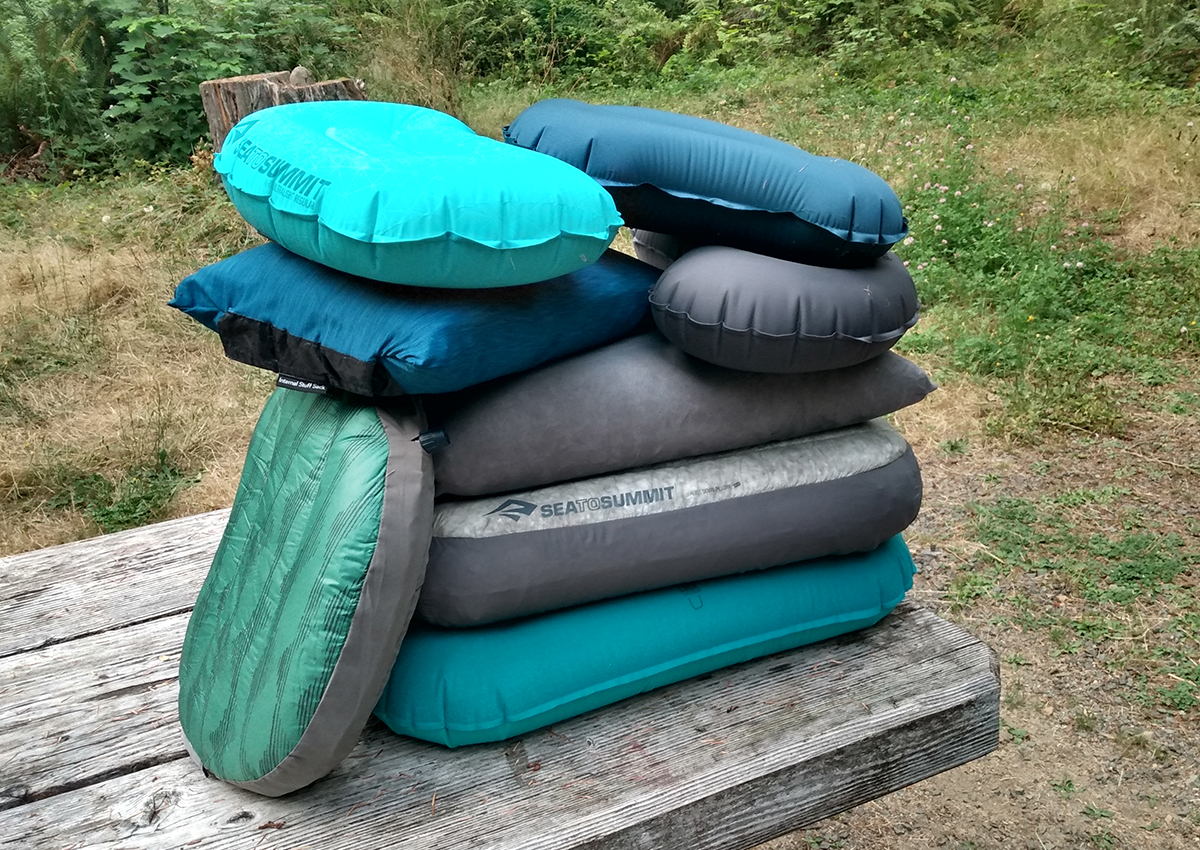
Sure, you can origami-fold your puffer jacket for a makeshift pillow in the backcountry, but more often than not you’re going to end up actually wearing your puffer jacket while sleeping. Adding a backpacking pillow can help align your spine (just like your pillow at home), making for a more restful night’s sleep.
